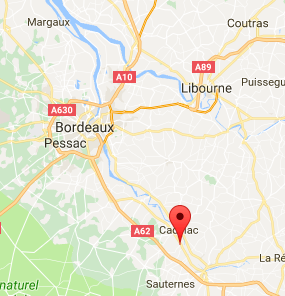Château Suduiraut

The Estate
The estate took the name of Suduiraut in 1580 upon the occasion of the marriage of Nicole d’Allard to Léonard de Suduiraut. The château was plundered and burned down during the Fronde insurrection, then rebuilt in the XVII century. It was re-named Cru du Roy in the late 18th century on being taken over by a nephew of the Suduiraut family, Jean Joseph Duroy, Baron of Noaillan. The family home then acquired a cartouche featuring the Suduiraut and Duroy coats of arms, which was to give rise to the escutcheon used by Château Suduiraut today. The property was planted with magnificent formal gardens, designed by Le Nôtre, King Louis XIV’s renowned gardener.
On 18 April 1855, the estate was classed as a Premier Cru during the official wine classification program in the Gironde winegrowing area.
AXA Millésimes acquired Château Suduiraut in 1992 with the aim of preserving and perpetuating the estate’s remarkable tradition of vineyard management and winemaking. Inspired by the great Suduiraut wines of the past, the new management has enabled this great vineyard to fulfil its full potential in recent years.
The Terroir
Certified High Environmental Value (HEV), the estate comprises 91 hectares of vines, on gravelly, sandy clay soil. The stones capture the sun’s heat, thereby helping the grapes to reach maturity more rapidly. It is this unique terroir that gives the wine its outstanding opulence.
This thin soil which retains very little water leads to low yields. It concentrates the grapes’ qualities and forces the vine to draw its nourishment from deep in the earth. The wine’s relationship with the terroir is even stronger because of this, and it expresses itself with strongly-marked minerality.
The Vines
High vine density (7,000 vines per hectare) and the high average age of vines (35 years) are important factors in the quality of the wines, along with environmentally responsible winegrowing methods, short pruning and tillage. Meticulous selection of the best botrytised bunches during harvest means that the Grand Vin Château Suduiraut is made only from the very best that the vineyard has to offer.
The proportion of each grape variety used determines the wines’ unique profile. 90% of the Suduiraut vineyard is planted with Sémillon vines and 10% with Sauvignon Blanc.
Semillon is a traditional variety of the region. When it is infected with noble rot it has an ample structure on the palate and gives the wine great mellowness and unctuosity. Wines produced with Semillon grapes are remarkably aromatic: they evoke honeyed fragrances, grilled dried fruits, acacia blossom and candied citrus.
Sauvignon Blanc has very characteristic aromas such as citrus, white peach, exotic fruits… When vinified as a liquoreux, or dessert wine, it adds a touch of acidity to the blend, bringing freshness and aromatic complexity.

Le Blanc Sec De Suduiraut
Overview: The gourmand and fresh Blanc Sec de Suduiraut offers immediate pleasure. Its bright aromatic expression makes it an ideal wine to be savored in its youth. To produce this wine, a specific plot of Château Suduiraut vineyard was selected, planted mainly with Semillon vines. The fine gravel and sandy terroir brings out fruit aromas and a beautiful freshness to this wine.
Grape Varieties: 54% Semillon, 46% Sauvignon Blanc
Aging: 75% in vats, 25% in barrels (30% in new barrels), for 6 months
Alcohol: 13%
Total Acidity: 3.3
Tasting Notes: Blanc Sec de Suduiraut reveals a fairly clear and bright lemon-yellow color. A pleasantly intense nose still displays the aromas of fermentation, then on breathing develops notes of white fruit, spices and a hint of hazelnut. The attack is rich, reflecting the fine maturity of the vintage, with a fresh palate highlighting white fruit aromas. A salty finish lingers on notes of citrus fruit and in particular grapefruit zest. This wine can be enjoyed now.
2019 Reviews: “I love the dry whites from the Sauternes area, and this is a good example of why. A little less round in mouthfeel from some in the area (not appellation – this is Bordeaux Blanc), but still with slate texture and minerality showing how well the soils here can work for dry white, and an excellent juicy delivery of citrus and white pear.” – 92pts, Decanter
“A fresh style, with just a whiff of brioche leading the way for honeysuckle, white peach and verbena notes. Ends with a nice mouthwatering edge on the finish. Sémillon and Sauvignon Blanc. Drink now through 2023.” – 92pts, Wine Spectator
Château Taillefer
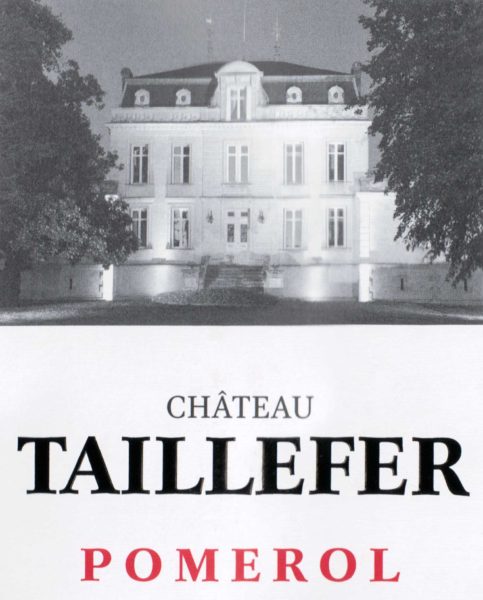
The Estate
The Bordeaux wine merchant Antoine Moueix acquired Château Taillefer in 1923 because he could see the great potential of this terroir. Situated on the plateau of Pomerol, this historic property was first recognized in 1776 by the geographer of Louis XV, and has been conserved with great care for over 2 centuries.
The estate spans 12 hectares and is planted mainly with Merlot and Cabernet Franc vines. The soil is rich in iron, a characteristic typical of the terroir of Pomerol. This fact that inspired the name of the estate: “Taillefer” comes from the French phrase “to cut iron.” The high iron content imparts complexity to the wine together with minerality and aromas of truffles and violets.

Chateau Taillefer Pomerol
Production Area: 11.5 hectares
Grape Varietals: 75% Merlot and 25% Cabernet Franc
Average Age of the Vines: About 30 years old
Soil: Sand and gravel soil with rich iron deposits
Plantation Density: 6,000 vines per hectare
Harvest: Traditional methods are favored with a mechanical tilling of the soils and manual tending to the vines. For each vintage, each plant is trained and cared for by man during some fifty successive field operations.
Vinification: Temperature controlled, traditional concrete vats. Malolactic fermentation takes place in a combination of cement vats and French oak barrels.
Aging: The wine is aged in French oak barrels for about 12 months.
Annual Production: About 4,000 cases
2016 Reviews: “The 2016 Taillefer is a straightforward, easygoing Pomerol endowed with quite a bit of near and medium-term appeal. Sweet red cherry, tobacco, cedar and mint are all nicely lifted. I would prefer to drink this racy, mid-weight Pomerol over the next decade or so.” – 91pts, Vinous
2015 Reviews: “…a broody nose with dark fruits, earth, licorice and black pepper notes. The medium to full-bodied mouth is packed with muscular fruit, with firm, chewy tannins and a lively lift to the earthy finish.”-91pts, Wine Advocate
2014 Reviews: “The 2014 Taillefer is a delicious wine with plenty of near-term appeal. Mocha, sweet herbs, tobacco, plums and menthol are all laced together in an effortless, savory wine endowed with real class and nuance, especially at its level. The significant presence of Cabernet Franc in this Merlot-based blend is quite evident, particularly in the wine’s intensely aromatic profile. Firm tannins support the long, expressive finish.” – 91pts, Vinous
Château Talbot

The Estate
Médoc Grand Cru Classé, Château Talbot comprises 107 hectares of vineyard cultivated in the heart of the Saint-Julien commune, an outstanding appellation, as it counts no fewer than 11 classified growths. Château Talbot is ideally situated on the banks of the estuary of the Gironde on hilltops of alluvial gravel carried by the Dordogne River from the Massif Central and from the Pyrénées by the Garonne.
The Vines
Of the vineyard area, 102 hectares are planted to red varieties, mostly Cabernet Sauvignon (66%), followed by Merlot (26%), Cabernet Franc (5%) and Petit Verdot (3%); there are also 5 hectares of Sauvignon Blanc and Semillon. The vines are planted at a density of 7,700 vines per hectare, mostly on 3,309 rootstock although there are also some on 101.14 and Riparia. They are Guyot trained, the norm in Bordeaux, average 35 years of age, and are harvested by hand with a final yield in the order of 45 hl/ha.
The Soil
The soils underfoot are, as is typical here, ancient quaternary gravels offering excellent drainage. Château Talbot is planted on a terroir of fine Günzian gravel on a core of fossil-rich limestone, which form draining hilltops.
Vinification
In the chai the fruit goes over a sorting table before undertaking a unique journey, through a tunnel ventilated with warm air, the effect being to dry the fruit of any moisture. It is then fermented according to plot of origin, using wooden vats or stainless steel, with temperature control. The oak used for the élevage comes for eight different coopers, with 50-60% new wood each year for the grand vin which is bottled as Château Talbot. This accounts for between 50-60% of the estate’s production in a typical vintage, amounting to approximately 30,000 cases per annum. The wines destined for the second wine, Connétable Talbot. It sees a lower percentage of oak than the grand vin. There now also appears to be a third wine, Seigneur de Talbot, bottled from the 2005 vintage onwards and specifically aimed at the Chinese market. Finally there is also a white wine, one of the few whites of the Médoc, known as Caillou Blanc. The vines were planted by Georges
Cordier, a fan of white wines as well as red, and he was one of the first to establish a white vineyard on the left bank. The wine itself an AC Bordeaux rather than St Julien and is a blend typically of 80% Sauvignon Blanc and 20% Semillon, raised in a mix of new and used oak.
Wines
The grand vin is the Château Talbot. The second wine is Connétable Talbot. The third wine is Seigneur de Talbot. And the Blanc is Caillou Blanc.

Château Talbot Saint-Julien 4ème Grand Cru Classé
History: Legend relates that the name of this imposing estate originates with Connétable Talbot, a famous English warrior, defeated at the battle of Castillon in 1453. Talbot is one of the Medoc’s oldest estates, its glory never tainted. Through the years it has been fortunate enough to remain in good hands. The owners are Nancy Bignon-Cordier and her family. They are the fourth generation of Cordiers to manage this Saint-Julien fourth classified growth.
Appellation: Saint-Julien, 4th Grand Cru Classé in 1855
Surface Area: 99 ha
Soil: Medoc’s gravelly soil
Density: 7,700 plants/ha
Average Age of the Vines: 50 years
Pruning: Medoc Double Guyot pruning
Cultivation: Plowing 4 traditional ways
Harvest: By hand; sorting in the vineyard and at the sorting table.
Vinification: In wooden vats
Maturing: 50% new barrels
Tasting Notes: Reveals complex aromas of yellow fruits and paprika enhanced with new oak and graphite notes. On the palate, the smooth attack is followed by tight tannins which give a really well-structured wine.

Connétable de Talbot
History: The name of the second wine of Talbot comes from Connétable Talbot, a reknowned English warrior who was defeated at the battle of Castillon in 1453. The Connétable Talbot was first produced in the 60’s; it is one of the oldest second wines of the Médoc.
Winemaker Notes: “Red cherries, white pepper with hints of mint give to this wine a fresh and chewy taste with a lightly toasted hint. The mouth is full and silky with a kind of softness all along the taste which makes this wine very delicate and very approachable already. A second wine is charming and full of pleasure.”
Appellation: Saint-Julien, 2nd wine of Château Talbot
Production Area: 105 ha
Soil: Medoc’s gravelly soil
Plantation Density: 7,700 plants/ha
Average Age of the Vines: 30 years
Pruning: Medoc Double Guyot pruning
Cultivation: Plowing 4 traditional ways
Harvest: Manual
Sorting: In the vineyard and at the sorting table
Vinification: In wooden vats and stainless steel tanks
Aging: 15% new wood
Alcohol: 13.5 %
Varietal Blend: 36 % Cabernet Sauvignon, 64 % Merlot
Château Taussin Marssot
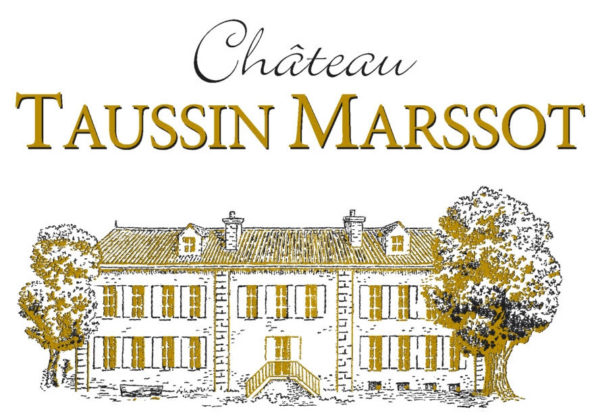
The Estate
Château Taussin Marssot is one of 6 chateaux owned by Famille Rochet.
It all started in 1865 with an exceptional couple, Jacques and Françoise Rochet. This duo bought a property between Dordogne and Garonne, recognized for the richness of its soils and its exceptional terroir (formerly owned by the Benedictines of the medieval city of La Réole). They operate and build their family history around 3 founding values: work, adaptability, and openness to the world. Thanks to the transmission of their know-how and their family values, generations of winegrowers succeed one another, and the estate now has 6 chateaux on more than 100 hectares.
Concerned with preserving and transmitting the quality of the vineyard to their children, the Rochet family has chosen to adopt reasoned agriculture, more respectful of the environment, thus allowing the production of quality wines while participating in the improvement of the economic and social fabric of the rural world. Their goal is to offer an alliance between satisfaction and pleasure, from the human hand to the tasting of their authentic wines, and faithful to the values of the Bordeaux vineyard.

Château Taussin Marssot Bordeaux
Grapes: Merlot, Cabernet Sauvignon
Vinification: Traditional wine making process in thermo-regulated stainless steel vats. Maceration at 8°C during 5 days. Alcoholic fermentation during 15 days at 25°C.
Tasting Notes: Its ruby-red color still conserves the purple notes of its youth. Red fruit and berries come together to create the freshness of its flavor. The first impression in the mouth is a marked fruity flavor with cherry notes typical of Merlots, which give way to smooth tannins enveloped in its long finish.
Food Pairings: Pairs well with roasted vegetables, and is fantastic with barbecued meats as well!
Château Tour de Gilet
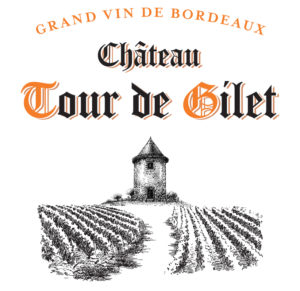
The Estate
Château Tour de Gilet is located in Ludon Médoc, 16 km north of Bordeaux in the Médoc area. The Château was erected on the foundation of an ancient abbey from the 12th century. Lots of little streams, called Jalles, cross the vineyard to drain the soil and to improve the quality.

Château Tour de Gilet Bordeaux Supérieur
Grape Varieties: 70% Merlot, 30% Cabernet Sauvignon
Producer: SCEA Château Tour de Gilet
Vinification: Traditional method in stainless steel vats with controlled temperature to keep the fruit aromas unspoiled.
Aging: Lasts 18 months in stainless steel and cement vats.
Tasting Notes: Rich and vibrant aromas and flavors of dark berries (blackcurrant, blackberry) and hints of cherries. Excellent balance and silky tannins.
Château Troplong-Mondot

The Estate
At the beginning of the XVIIIth Century, the Mondot estate belonged to one of the most prestigious artistocratic families in Gironde : the de Sèze family. The count, Peer de France, who was also a member of the French Academy, naturally brought his renown to the property, and the wine of Mondot became among the most sought after in Saint-Emilion. In 1850, Raymond-Théodore Troplong acquired Mondot. It was Edouard Troplong who, at the death of Raymond, inherited the vineyard. Following a trend at that period, he added Mondot to his own name. Troplong Mondot was born. At the beginning of the XXth century, the Valette family bought the property shaped by its previous owners. During the 80’s, Christine and Xavier Pariente improve the quality of their wines and its renown around the world. Today, a third of the property is cultivated and worked only with horses. For decades, no insecticide nor persticide has been used. A sustainable, original and innovative cultural approach is set up. Troplong Mondot is rewarded in 2006 by the ten-yearly classification of Saint-Emilion, placing Troplong Mondot First Great Classified Growth.

Château Troplong Mondot Saint-Emilion
Production Area: 33 Ha (bigger than most estates of this area which are usually 10 ha)
Location: Troplong Mondot sits on the top of a hill (106 meters above sea level) and dominates the surrounding countryside; the gentle southwest slope overlooking the village of Saint-Emilion and the sharp south facing hill which extends to Chateau Pavie.
Average Age of the Vines: 30 years old
Soil: Limestone clay soil enhanced with sedimentary fragments of flint and chalk.
Vines: For the last 20 years or so the use of weed killers has been totally eliminated. For 15 years now, Troplong Mondot has set in place a very sophisticated drainage protocol to overcome the subsoil’s hydromorphy, in order to optimize the sanitary state of the vines. The introduction of animal drawn plowing methods seemed an obvious change to make: 8 dray horses have now replaced the tractors, eliminating mechanical vineyard work. Thanks to the new plantings in staggered rows and less compaction of the soils due to the animal traction, the vineyard breathes better.
Planting Density: 5,600-6,600 vines/Ha
Grape Varieties: The vineyard is planted traditionally with the best varieties of this area of Bordeaux. Merlot is the royal varietal of this region and the most widely planted which gives the powerful structure to the wines, in other words, its body and flexibility, whereas Cabernet Franc gives it delicacy and elegance and Cabernet Sauvignon its personality and long life.
Vinification: Hand harvested, total destemming. Matured in oak barrels of which 75% are new oak and 25% are one-year old for 12 to 24 months depending on the vintage.
Average Production: 60,000-90,000 bottles
2006 Reviews: “A wine that succeeds in combining great depth of flavor and structure with an impressive array of flavors. On top of the tannins is juicy black fruit, cocoa, a welter of spice and ripeness. The acidity and new wood put the wine into a more modern style.”-94pts (Cellar Selection), Wine Enthusiast
Château Vray Croix de Gay

The Estate
Chateau Vray Croix de Gay has its origins in the late 1800s when this plot of land was purchased by Joseph Brisson. Until recently, sales and winemaking were managed by Établissements Jean-Pierre Moueix, a Bordeaux négociant house. In 2005, Aline and Paul Goldschmidt (owners of Chateau Siaurac in Lalande de Pomerol and Chateau Le Prieure in Saint-Emilion) assumed management of the estate, hired Stephane Derenoncourt and Alain Raynaud as consultants, and replanted more than half of the Pomerol vineyards. They eventually sold a large percentage of their holdings to Francois Pinault (owner of Chateau Latour) and the Artemis group in 2014.
Since 2008, Chateau Vray Croix de Gay has practiced sustainable farming. Beginning with the 2016 vintage, the estate uses 100% organic and biodynamic farming methods.

Château Vray Croix de Gay Pomerol
Production Area: 12 acres
Terroir: Gravel and clay rich in iron deposits
Average Age of the Vines: Older vines with an average age of 43 years.
Grape Varieties: 80% Merlot and 20% Cabernet Franc
Vinification: This will likely change in 2020 due to Pomerol appellation laws, but the wines are currently vinified at the cellars of Chateau Siaurac, the other estate managed by the owners located on the border of Pomerol. Vinification takes place in a combination of 50-hectoliter concrete and stainless steel vats. Malolactic fermentation in both barrels and vats.
Aging: 14-18 months (depending on the vintage) in French oak barrels (50% new wood) for between 14 and 18 months.
Annual Production: About 1,100 cases
Cellaring Potential: 5-10 years
Serving Temperature: 15.5 °C
Food Pairings: Wild game and poultry, Asian dishes, rich fish, pasta dishes.

L'Enchanteur de Vray Croix de Gay
Overview: L’Enchanteur de Vray Croix de Gay is the Second Wine of the estate.
Grape Varieties: 100% Merlot
Aging: 11 months in barriques
Tasting Notes: Deep plum color. This is a profound wine, fruity and velvety on the palate with intense aromas of dark fruit.
Food Pairings: Red meat, duck, roast beef, natural rind cheeses, and chocolate desserts.
Clos Fourtet
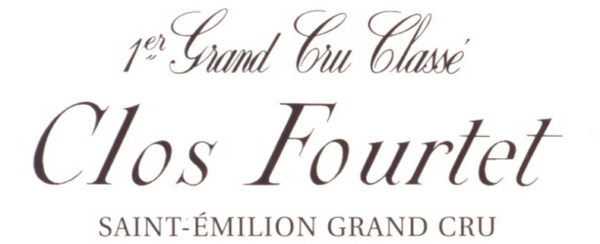
The Estate
Clos Fourtet owes its initial reputation to the Rulleau and Carles families, Lords of Figeac. In the 18th century, they were the first to make the most of this land with only a thin layer of arable soil, but blessed with outstanding natural drainage. Clos Fourtet has abundantly proved its standing as a Premier Grand Cru Classé, helped in this respect by hard work and major investments by the Cuvelier family, owners since 2001.
Located atop the limestone plateau well-known for producing some of the greatest wines in Saint-Émilion, Clos Fourtet has one of the appellation’s best and most famous terroirs.
The vines, located in a single block a stone’s throw from the medieval village, grow atop impressive underground quarries.
Winemaking is very traditional, but complemented by the most up-to-date techniques. In keeping with Clos Fourtet’s inherently strong personality, it is aged entirely in new oak barrels. The wine is extremely elegant, with incomparable minerality and freshness.

Clos Fourtet Premier Grand Cru Classé Saint-Émilion
Owner: Philippe Cuvelier
Manager: Matthieu Cuvelier
Appellation: Saint-Émilion – 1er Grand Cru Classé
Situation: Set upon the highest slope of western Saint-Émilion
Production Area: 19 hectares
Soil: Limestone and clay
Grape Varieties: 85% Merlot, 10% Cabernet Franc, 5% Cabernet Sauvignon (percentages vary depending on the vintage)
Plant Density: 6,000 vines / hectare
Average Age of Vines: 25 years
Oenologists: Jean-Claude Berrouet and Stéphane Derenoncourt
Harvesting: By hand, using small baskets
Sorting: By hand and optical sorting machine
Vinification: Whole grape fermentation in 25 thermo-regulated stainless steel vats of small capacity. Manual extraction using the ‘pumping down’ technique to preserve a maximum of optimal raw material. 25-30 days in vats. Malolactic fermentation in barrel.
Aging: 60-80% new oak barrels for 14-18 months in underground caves
Production: 2,500-4,000 cases of Grand Vin
Domaine de Baronarques (Sustainable)
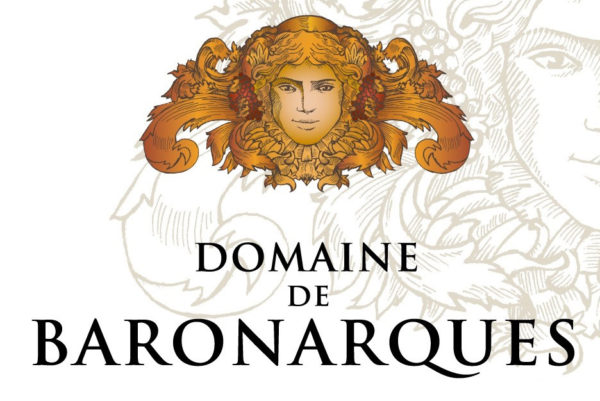
The Estate
Domaine de Baronarques is a very old estate, dating back at least to the 17th Century, when it was called Domaine de Lambert. At the time, the estate belonged to the Abbey of Saint-Polycarpe, a village near Limoux in the Aude department of Southern France.After changing hands several times, the estate was sold to Michel Tisseyre in 1875. The Tisseyre family extended the vineyard – it covered 48 hectares (120 acres) in 1910 – and between 1890 and 1900 built themselves an attractive residence with a terrace and a garden.
In 1998 Mr. Chéreau, a Marseilles lawyer and heir of the estate, sold it to Baroness Philippine de Rothschild and her two sons. The three entrusted the management of the Domaine to the family company, Baron Philippe de Rothschild S.A. The estate was very run down, calling for extensive renovation of the vineyard and the winemaking facilities, a process that took five years.
In 2003, Domaine de Baronarques benefited from a fortunate conjunction of circumstances: the wine proved to be of very high quality and the Domaine was awarded the AOC Limoux rouge appellation, newly created by the Institut National des Appellations d’Origine (INAO). Domaine de Baronarques could take its rightful place alongside the family’s other estates, including the illustrious Château Mouton Rothschild.
Camille Sereys de Rothschild joined the original buyers, Philippe Sereys de Rothschild and Julien de Beaumarchais de Rothschild, her brothers, in 2014.
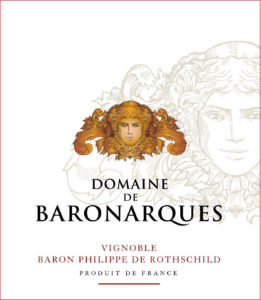
Domaine de Baronarques Limoux Rouge
Location: Domaine de Baronarques is located in Languedoc, in the commune of Saint-Polycarpe, near Limoux. The Domaine is a single 110-hectare (272-acre) estate, 43 hectares (106 acres) of which are planted with vines.
Climate: Located 400 km from the Atlantic Ocean and 100 km from the Mediterranean, the vineyard is subject to the climatic influence of both water masses, ensuring optimum sunshine and balanced rainfall. Also close to the Pyrenees, the parcels are at an altitude of 250 to 350 meters, tempering the summer heat.
Soil: The soil is mainly clay and limestone, except for a few parcels where there is more gravel and sand.
Grape Varieties: The vineyard is planted with 70% Bordeaux varieties (Merlot, Cabernet Sauvignon, Cabernet Franc) and 30% Mediterranean varieties (Syrah, Grenache and Malbec) for the red wines and 100% Chardonnay for the white wine.
Vine Density: Seeking the best possible quality, Domaine de Baronarques has opted for high-density planting: 7,500 plants per hectare on 10 hectares (25 acres) of the estate and 4,600 plants per hectare on the other parcels (most vineyards in the region are planted with a density of around 3,000 plants per hectare).
Viticulture: The vineyard practices at the Rothschild family’s other estates (disbudding, leaf removal, cluster thinning) are well-suited to the Domaine’s different types of soil, microclimates and grape varieties.
Harvest: The grapes are harvested by hand in 12-kilo open baskets, as in the family’s Bordeaux vineyards.
Vinification: The grapes are sorted above the vat room and fed into the vats by gravity, a process which helps to keep the fruit whole. They are then gently destemmed and lightly crushed, and fermented in stainless steel vats. Alcoholic fermentation lasts about 8 days at a maximum temperature of 30°C. It is followed by a maceration period lasting 2-4 weeks depending on the wines and the grape varieties.
Aging: After malolactic fermentation, the premium red wine is matured for 12 months in oak barrels, either new (25-50% depending on the vintage) or one to three years old.
Domaine de Chevalier
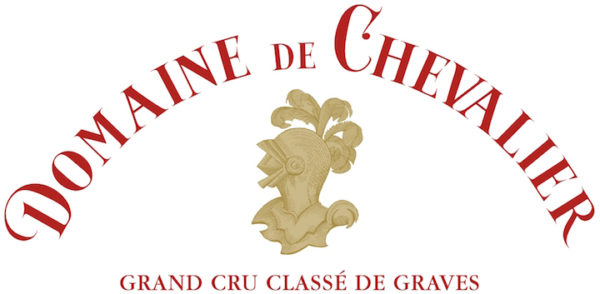
The Estate
Domaine de Chevalier is located in Léognan, the capital of the Graves region. It dates as far back as 1783, when it appeared on the famous map of Pierre de Belleyme. In 1983, the estate was purchased by the Bernard Family, number one in France in the spirits market and a major négociant of premium Bordeaux wines. It has been run ever since by Olivier Bernard who perpetuates that spirit of balance and the constant drive for perfection which have been the hallmark of this outstanding wine. The Domaine de Chevalier Rouge, the flagship of the Pessac-Léognan appellation, belongs to the elite of the great classified growths of Bordeaux. The Domaine de Chevalier Blanc is recognized as one of the world’s finest dry wines.

Domaine de Chevalier Pessac-Léognan
Appellation: Pessac-Léognan
Soil: Gravel on clay-gravel subsoil
Production Area: White wine-5 hectares; Red wine-45 hectares
Average Production: White-18,000 bottles; Red-100,000 bottles
Harvest: Hand-picked into small crates. The grapes are carefully sorted in the vineyard as well as before and after destemming.
Vinification: 2 vat-rooms, one with small tulip-shaped tanks (since 2013) to increase the plot selection, complete the extraction, and refine the blend.
Aging: Barrel aging 16 to 20 months (35% new oak), bâtonnage 4 months (stirring the lees with a stick).

L'Esprit De Chevalier
Overview: Since 1986, the planting of young vines has meant that Domaine de Chevalier had to craft a second wine, both white and red. By calling its second wine L’Esprit de Chevalier, the Bernard Family wanted above all for it to carry the hallmark of Chevalier and to reflect the spirit, or “l’esprit,” of the estate. This wine combines power and complexity but also finesse and elegance in total respect of the terroir.
Appellation: Pessac-Léognan
Soil: Gravel on clay-gravel subsoil
Grape Varieties: Cabernet Sauvignon, Merlot, Petit Verdot (percentages vary depending on the vintage)
Harvest: Hand-picked into small crates. The grapes are carefully sorted in the vineyard as well as before and after destemming.
Vinification: 2 vat-rooms, one with small tulip-shaped tanks (since 2013) to increase the plot selection, complete the extraction, and refine the blend.
Aging: Barrel aging 14 months (35% new oak), bâtonnage 4 months (stirring the lees with a stick).
Tasting Notes: On the palate, the ripe, red fruit is pure, complemented by a fleshy mouth feel. Spicy (sweet pepper) and mineral (graphite) notes. A persistent and crunchy fruitiness at the finish. Very good balance.
Alcohol: 13.5%
Domaines Denis Dubourdieu
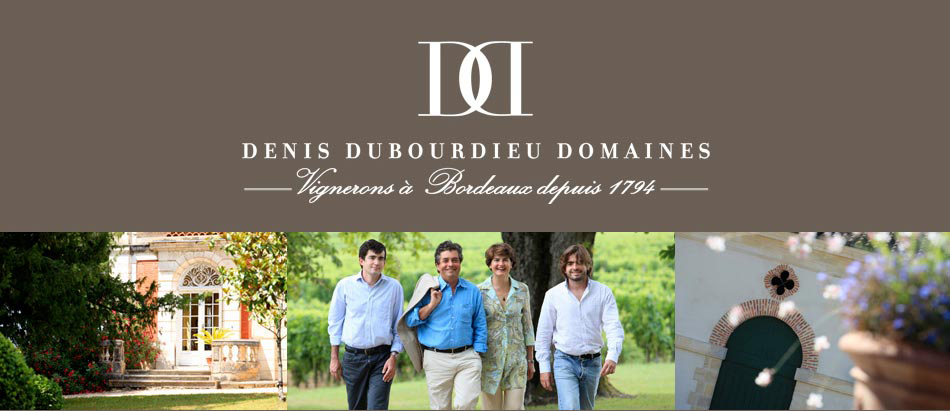
Overview: The Dubourdieu family comes from a long line of “vignerons,” or winemakers, from the Bordeaux region. Denis Dubourdieu and his wife Florence continue that tradition today, and with the help of their two sons, Fabrice and Jean-Jacques, they manage several estates: Chateau Doisy Daene, Clos Floridene, Chateau Reynon, Chateau Cantegril, and Chateau Haura. These estates cover an area totaling about 135 hectares, in the Sauternes, Graves, and Cadillac-Côtes de Bordeaux regions. Average production for the Domaines Dubourdieu total about 600,000 bottles per year, 60% of which are exported to 40 different countries.
For more information on Denis Dubourdieu, or has he’s known in some circles,”The Professor of Bordeaux”, follow the link to read Decanter’s profile on Dubordieu and his estates: Decanter’s Man of the Year
Location: Situated along the Garonne river, 35 km southeast of Bordeaux, the Domaines Denis Dubourdieu are located in Barsac in the Sauternes region, Pujols sur Ciron, Illats in the Graves region, and Béguey and Laroque in the Cadillac-Côtes de Bordeaux region. The terroir varies from estate to estate; on the right bank of the Garonne, the earth is quite hilly, whereas the left bank has pebbly terraces and calcareous plateaus.
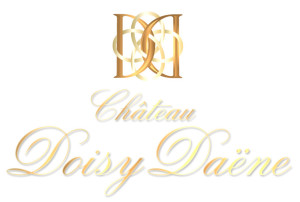
Overview: Located in Barsac in the Sauternes appellation, Château Doisy-Daëne (2eme Cru Classé in 1855) has been in the Dubourdieu family since 1924, and covers an area of about 18 hectares. For over 80 years, 3 generations of vine growers have used their talents to produce great sweet white wines: Georges (1924-1948), Pierre (1949-1999), and Denis since 2000.
Vines: The vines average more than 40 years of age. They are planted at a density of 7,000 vines per hectare, with 86% being Semillon, and 14% being Sauvignon Blanc. They are cared for with minimal treatments, no herbicides, and regular plowing between the vine rows to disrupt the growth of the more superficial roots. In an effort to balance the carbon footprint, the winery manages a forest area equal in size to the vineyards.
Soil: Typical of Barsac–a mix of red sand and clay, beneath which lies a bedrock of solid limestone peppered with fossilized shellfish and starfish. This particular soil composition is credited for blessing the wines with their trademark fresh acidity.
Viticulture:
 -Traditional ploughing is performed on the soil of our vineyard and no weed-killer is used.
-Traditional ploughing is performed on the soil of our vineyard and no weed-killer is used.
-Organic manures are made with vegetal-based composts.
-Bud removal, trellising and leaf removal are carefully done by hand.
-We are engaged in a process of abandonment of the use of chemical synthetic pesticides on all of our vineyards.
-Thus “grown like in a garden”, within an orderly and well preserved environment, our vines produce early concentrated tasty grapes which have the smoothness and brightness of fresh fruit aromas we wish to obtain in our wines.
-In an effort to balance our carbon footprint, we manage as well a forest area equal in size to our vineyards.
The Wines:

Château Doisy-Daëne Grand Vin Sec
Grape Varietals: 100% Sauvignon
Vinification: Once the grapes have ripened, a few bunches are collected on each vine from all the Sauvignon plots. After an eventual phase of skin contact, slow juice extraction takes place, protecting the grapes from oxidation. Free run must is strictly separated from press must, and clarification occurs through natural settling. Fermentation follows in oak barrels.
Aging: Lasts 8 months with lees regularly stirred
Tasting Notes: The Grand Vin Sec de Doisy-Daëne is one of the best Vins Blancs Secs of Bordeaux. Considered to be like Doisy-Daëne Barsac’s younger brother, it expresses in a different style all the distinction and finesse of this exceptional terroir. It possesses an unusual aromatic power, with grapefruit and white peach aromas in the bouquet, and flavors of pear and spice on the palate.
Cellaring Potential: Delicious when young, it also has great aging potential (5-10 years)
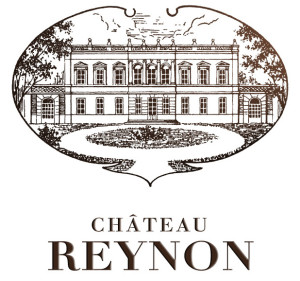
The Estate: Château Reynon, located in Beguey in the Premières Côtes de Bordeaux appellation, was purchased in 1958 by Florence Dubourdieu’s father, Jacques David. His daughter and son in law, Denis Dubourdieu, took over the vineyard in 1976. Thanks to their hard work, Château Reynon is today one of the most renowned Premières Côtes de Bordeaux estates.
The Vines: The red vineyard has a surface area of 20.5 ha, and is composed of 81 % Merlot, 6 % Cabernet Sauvignon, 13 % Petit Verdot. The density of the vineyard is 5,500 plants per hectare. The white vineyard is 12.8 hectares and is made up of 87 % Sauvignon and 13 % Sémillon. The density of the vineyard is 5,500 plants per hectare.
The Soil: Deep gravelly soil layers on clayey subsoil top a perfectly well drained hill. At mid-slope, the soils are clayey and calcareous and the rock protrudes in some areas. The soils are sandier at the foot of the slope.
The Wines:

Chateau Reynon Blanc
Production Area: 8.5 ha
Grape Varietals: 100% Sauvignon Blanc
Harvest: Hand harvesting is performed in 1-2 selective pickings of the grapes when they have reached the optimum aromatic ripeness.
Vinification: After an eventual phase of skin contact, slow juice extraction takes place, protecting the grapes from the oxidation process. Free run must is strictly separated from press must, and clarification occurs by natural settling. Fermentation takes place in stainless steel vats.
Aging: Maturation sur lies, 50% in steel tanks and 50% in 60-80 hl wooden barrels, for 5-7 months before bottling.
Tasting Notes: The combined elements of soil quality, moderate production, and the fine wine-making process create an elegant and dry white wine, at once complex and tasty, with grapefruit and white peach aromas, and mineral and smoky hints.
Cellaring Potential: Remarkable aging potential of at least several years

Chateau Reynon Rouge
Production Area: 20.5 ha
Grape Varietals: Merlot, Petit Verdot; Cabernet Sauvignon
Vinification: Ripened harvest is handpicked and undergoes 20-25 days maceration at moderate temperatures (25-30°C)
Aging: Aging takes place in oak barrels (a third of which is new) for 12 months
Tasting Notes: This wine has a deep color and subdued aromas of licorice, black currant, and smoke. The flavors are velvety, elegant, and powerful.
Food Pairings: Goes excellently well with beef and venison

Le Clos de Reynon Rouge
Overview: Le Clos de Reynon is the second wine of Chateau Reynon
Grape Varietals: Merlot, Cabernet Sauvignon, Petit Verdot
Vinification: Ripened harvest is handpicked and undergoes 20-25 days maceration at moderate temperatures (25-30°C).
Aging: Aging takes place in oak barrels and stainless steel vats.
Tasting Notes: This is an elegant, ruby red wine, complex and tasty, with fruity and spicy aromas.
Food Pairings: Red meat
Cellaring Potential: 10-15 years
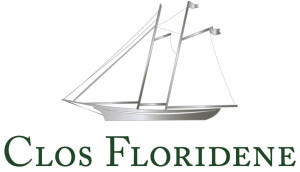
Location & History: Clos Floridène covers an area of 40 hectares in the Graves appellation. It lies mostly on the limestone plateau of Pujols sur Ciron (near Barsac), with a few portions located on the pebbly terraces of Illats. The name stems from the combination of the founders’ names – Denis and Florence Dubourdieu.
Established in 1982, Clos Floridène was originally a small, 2-hectare plot of land planted with old vines of Semillon and Muscadelle. There was the winemaker’s homestead, an old cellar, and 2-hectares of fallow land, which were immediately planted with Cabernet Sauvignon.
Over time, the vineyard was expanded through the purchase of adjacent plots of land. In 1991, Clos Floridène was substantially enlarged through the incorporation of Chateau Montalivet, a nearby 13-hectare vineyard.
The wines of Clos Floridène were first made in the cellar at Chateau Reynon. The first phase of building the cellar at Floridène started in 2004. The red Clos Floridène 2005 vintage was elaborated in this new facility.
The original historic homestead was also restored. It is now used as a bed & breakfast with an attached reception hall for hosting events and promoting wine tourism.
The renovation work was completed in 2018. In all, it took 36 years to launch Clos Floridène as an independent vineyard and winery, and today it is internationally known.
The Soils: From a geological standpoint, the soil of Pujols sur Ciron are much like the that of Barsac. A thin layer of red clayey sands rich in iron oxide, known as Barsac Red Sand, tops the limestone bed rock. This limits the vines’ roots growth to about 50 cm below ground. The water is stored within the slightly porous rock throughout the summer and is gradually released to the vines during the winter, thus preventing excessive water stress.
The Vines: The 17.3 hectare red vineyard has a high 72% Cabernet Sauvignon ratio combined with 28% Merlot. The plantation densities range between 5,500 plants (1.8 x 1m) and 7,140 (1.4 x 1m) plants per hectare. The 22.7 hectare white vineyard is composed of 56% Sémillon, 43% Sauvignon, and 1% Muscadelle. The plantation densities range between 5,500 plants (1.8 x 1m) and 7,140 (1.4 x 1m) plants per hectare.
The Wines:

Clos Floridène Blanc
Appellation: Graves Blanc A.O.C
Production Area: 41 hectares
Soil: Clay-limestone
Grape Varieties: Sauvignon Blanc, Sémillon
Average Age of the Vines: 35 years old
Harvest: Manually done with one pass over or two if necessary. The grapes are picked at their optimum aromatic ripeness.
Vinification: After a slow phase of skin contact, a gentle juice extraction is performed, protected from the oxidation process. Free run must is strictly separated from press must and the clarification takes place by natural settling. Fermentation in barrels renewed by quarter.
Aging: 9 months with lees regularly stirred.
Tasting Notes: Clos Floridène Blanc has the characteristics of a white wine produced on calcareous soils: green-gold color, intense aroma with fruity notes of white peach, lemon, grapefruit, toasted and grilled nuances. Powerful and fresh flavors of fruit, with the density and structure of a great white wine.
Cellaring Potential: At least 10 years

Clos Floridène Rouge
Grape Varieties: Cabernet Sauvignon, Merlot (percentages vary depending on the vintage)
Harvest: Ripened harvest is handpicked
Vinification: The grapes undergo 20 to 25 days maceration at moderate temperature (25°C to 30°C).
Aging: In oak barrels for 12 months (1/3 new wood)
Tasting Notes: Clos Floridène Rouge is strongly marked by an unusual association in Bordeaux–Cabernet-Sauvignon on calcareous soil. With a bright and intense color, it has black-currant and wild strawberry aromas, with hints of mint, licorice and smokiness. The fruit and tannins are powerful, silky, and fresh.




